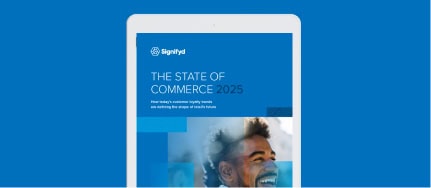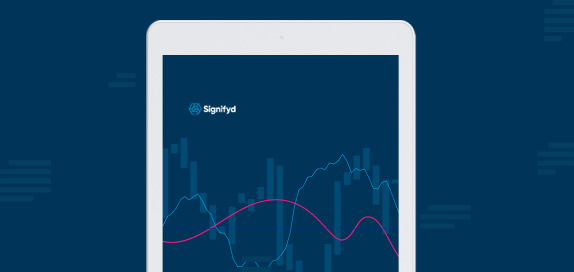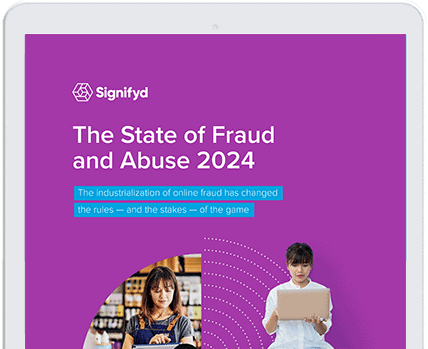Visa’s move to dramatically overhaul its fraud monitoring programs in April means that retailers and their banks will be more likely to be affected by the program and that they will need to rethink how they manage the inevitable customer disputes that arise in online commerce.
The card brand announced it will scrap its existing programs — the Visa Dispute Monitoring Program (VDMP) and the Visa Fraud Monitoring Program (VFMP) — as of April 1, and replace them with the Visa Acquirer Monitoring Program (VAMP).
Visa modifications to VAMP — May 20, 2025
After hearing from affected merchants and acquirers and working with the Merchant Risk Council, Visa has announced a number of changes to the Visa Acquirer Monitoring Program that it is currently rolling out. Visa announced in March that enforcement of the new program will not begin until Oct. 1, pushing the date back from April. Then during a webinar on May 20, hosted by the MRC, Visa announced the following changes and details:
- Dispute ratios will be calculated by taking the total count of TC40 fraud and TC15 disputes (codes 10-13) divided by the total count of settled transactions.
- The “above standard” threshold for acquirers will be 0.5%
- The “excessive” threshold for acquirers will be 0.7%
- The “excessive” dispute threshold for merchants will begin at 2.2% and decrease to 1.5% on April 1, 2026.
- Enforcement for acquirers and merchants deemed “excessive” will begin on Oct. 1, 2025.
- Enforcement for acquirers deemed “above standard” will begin on January 1, 2026.
- Visa also said it would loosen the requirement that only disputes refunded through designated and proprietary Visa services, such as Verify, could be removed from the count against merchants. Disputes refunded through solutions provided through Mastercard will also be considered.
During the webinar, which featured Keith Briscoe, MRC’s vice president, member advocacy, and Ami Patel, Visa vice president, ecosystem risk management, Patel urged merchants to connect with their acquirers to better understand where they stood in relation to VAMP and how to best move forward together.
This blog post has been edited to reflect the changes announced May 20.
How will VAMP change fees for excessive chargebacks?
Among the biggest changes:
- Non-fraud disputes — first-party fraud such as item not received and claims that an item arrived not as described — will be added to payment fraud disputes for purposes of determining whether acquirers and merchants are penalized and fined for generating too many disputed transactions. The addition of non-fraud disputes makes things tougher for all merchants but is of particular interest to EMEA merchants, where SCA regulations have caused a significant shift from payment fraud attacks to non-fraud disputes involving first-party fraud.
- Acquirers will now be subject to dispute thresholds based on the aggregate dispute-to-settled transaction ratio generated by the merchants they serve.
- Initially, the dispute threshold for acquirers will be
.05%, .07%, effective June 1. The “above standard” dispute threshold for acquirers will kick in for ratios between .05% and .07%.between according to anMRC blog post outlining the change.The post explains: In January 2026, the .05% rate will remain in place and be labeled “excessive.” A lower tier, known as “above standard” will be added, covering dispute ratios between .03% and .05%.For merchants, the dispute threshold will start at1.5% in April2.2% in June and fall to0.9% in January1.5% on April 1,2026. - According to the post, the fees for acquirers that exceed the standard and excessive thresholds will be $5 and $10 per dispute, respectively. For retailers that exceed the merchant thresholds, the fee will be $10 per dispute, according to a January MRC blog post outlining the change
- Acquirers and merchants will be subject to the monitoring program based solely on the percentage of disputes. There will no longer be a minimum dollar amount in the equation, meaning rapid-fire, low-value carding attacks will be counted among the disputes that subject acquirers and merchants to the program’s penalties.
“These stricter thresholds make it critical for merchants to monitor their chargeback metrics more closely, as surpassing these limits could result in increased fines or even restrictions on processing payments,” Signifyd Senior Manager, Risk Intelligence Xavi Sheikrojan said.
Update March 24: Visa agrees to extend VAMP advisory period until Oct. 1
Visa announced that it would extend its advisory period for the rollout of VAMP until the fall, meaning that the card brand will not begin charging fees for those exceeding the program’s dispute thresholds until Oct. 1.
In announcing the delay to its members, the Merchant Risk Council added, “Visa will collaborate with both merchants and the MRC to address the program concerns. If further program adjustments are deemed necessary, effective dates for the program could change accordingly to allow for a sufficient advisory period before formal penalties would begin.”
VAMP fees could push merchants to become overly conservative
The VAMP details are many and in some cases not yet clear. Visa has included VAMP references in its service rules. But it hasn’t yet publicly released all of the program’s details, so the particulars could change before they are implemented.
Generally speaking, however, merchants will want to carefully monitor their approval and false decline rates to ensure that neither they nor their acquirers are becoming overly conservative in the face of the monitoring program changes. It could be a time to reassess their fraud and abuse protection strategies and tools to ensure they can continue to provide excellent customer experiences while still safeguarding against first-party and payments fraud that could push them over the threshold limits.
The merchant and acquirer relationship is more important than ever
Given that acquirers will be subject to the monitoring program, the relationship between acquirers and merchants will be as important as ever. Merchants will want to work closely with their acquirers to better understand what their responsibilities will be and where their historical performance will place them regarding the new math, the thresholds and any projected fees for non-compliance.
The new system also makes a strong case for conducting fraud review before bank authorization. Pre-authorization review — or pre-auth — provides the possibility of weeding out fraudulent orders before they become settled transactions. That would preclude them from counting toward dispute rates.
Simplifying VAMP: Advice from a fraud protection provider and an acquirer
In the webinar below, Kimberly Singleton of Worldpay and Nicole Jass and Xavier Sheikrojan of Signifyd dig into how merchants can prepare for the start of Visa’s new monitoring program. The three break down the changes and help merchants understand exactly why those changes matter.
You’ll also hear:
- A clear breakdown of VAMP — what’s changing and why it matters
- How to assess your fraud and dispute ratios to ensure compliance
- Steps you can take today to avoid penalties and protect your revenue
- How best in-class fraud prevention can help merchants stay below VAMP thresholds
- The role of payment processors like Worldpay in supporting merchants
Pre-auth comes with a number of other advantages, as well. First, sending cleaner transaction traffic to the bank builds up a merchant’s reputation and leads to higher authorization rates as issuers’ confidence in a merchant’s orders increases. Pre-auth also improves customer experience, reduces interchange costs and improves the performance of machine learning models that protect against fraud.
Changes big and small are coming with the launch of VAMP
Beyond the biggest changes, the VAMP era will usher in a number of other significant changes, including:
- The minimum dollar value of disputes required for inclusion in the program will be eliminated. That means many very low-value transactions could land a merchant in the program, even if the total dollar amount involved is relatively small. Think a carding attack with thousands of very low-value charges.
- The formula for inclusion is the number of disputes divided by settled transactions. That means that even disputes resolved with a refund after settlement will be counted against a merchant once a transaction is settled — again an argument for pre-authorization fraud review. Even if a chargeback is avoided, the dispute still counts against a merchant. The move is an effort to encourage merchants to prevent and resolve disputes on the front end rather than with refunds that might or might not be legitimate.
Only disputesDisputes refunded through designated and proprietary Visa services, such as Verify, can be removed from the count against merchants.— a rule that is raising eyebrows among online retailers.Disputes refunded through solutions provided through Mastercard can also be removed from the count against merchants.
How can merchants prepare for Visa’s new monitoring program?
While Visa has yet to publicly release the complete VAMP details, ecommerce fraud and payments are in for a dramatic overhaul in a matter of weeks. Merchants — and their acquirers — need to prepare now, if they haven’t already started. Among the steps to take:
- Take a deep dive into your disputes and chargebacks — particularly your non-fraud disputes, which will now be counted against you for purposes of the monitoring program. Look for patterns. Why do they happen? How can they be reduced, eliminated or at least headed off before they become settled transactions?
- Undertake a serious check-up — we’re talking Mayo Clinic level — of your fraud protection systems, solutions and strategies. Are they up to the tougher task of defending you in the new era of dispute monitoring? Tap your network for advice and inspiration from peers in the industry.
- Consider the benefits of pre-authorization fraud review, which will reduce the number of fraudulent orders that result in settled transactions.
- Communicate and then communicate some more with your acquirer or acquirers. What will this new system look like for your business? Given your transaction history, where do you fall on the new dispute spectrum? What do they know about the particulars of VAMP? It’s possible Visa has told them more than it’s disclosed publicly. And finally, consider whether your current array of acquirers makes sense for this new paradigm or whether changes are in order.
Photo courtesy of Getty Images.
Have questions about managing Visa’s new fraud monitoring program? We can help.









